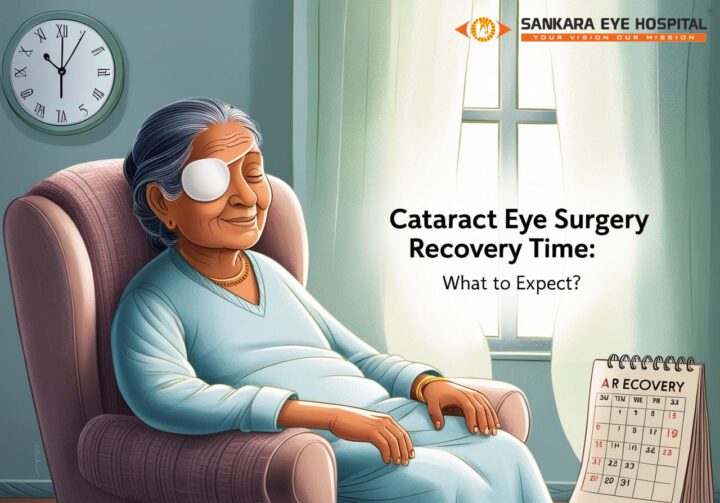Computer Vision Syndrome: All that you need to know
Computer Vision Syndrome: All that you need to know
We are living in the digital age, where every piece of information we consume or generate is likely through a gadget of some kind. The advantages they offer are unparalleled when compared to traditional methods of content creation. This factor has been the thrust behind their meteoric rise in favorability among the populace.
The Nielsen Total Audience Report 2018 shows that, on average, an American adult spent 11 hrs a day in front of some screen that was an active display. That’s a lot of screen time for the eye. And it has only increased with the lockdowns, adding children to the mix as well.
And the consequences are showing, with an increase in vision and eye problems. The one problem that is continuously popping up in large numbers is Computer Vision Syndrome
So What Exactly Is Computer Vision Syndrome?
To put it in simple terms, Computer Vision Syndrome, also called digital eye strain, is the set of eye and vision-related problems that develop as a result of staring at an active display like TV’s, smartphones, computer screens, etc., for extended periods. These problems start off mild but get severe over time if exposure to screens is not reduced.
What Causes CVS?
The process of the development of CVS is rather straightforward. All active displays emit light to make the content on the display visible. The light emitted is primarily white light due to the usage of a white background in many applications and web page backgrounds. The white light is a combination of the three primary colors blue, green, and red-in various proportions. However, the blue component tends to be high in such light.
Blue light is known to stimulate the brain into staying active and excites the light receptors in the eyes. Such stimulation over lengthy periods causes eye strain to develop, leading to discomfort.
Adding to that is the presence of dynamic, color-filled content that can further push the eyes to work harder. When this is combined with poor scheduling where a person exposes their eyes to such stimulation without proper rest, the effects will continue to get worse.
The viewer may also push themselves to look at blurry content on the screen with increased brightness and contrast in a dark environment, adding even more eye strain and exacerbating the problem.
What are CVS’ symptoms?
The first sign of CVS is eye fatigue. The viewer will start to experience discomfort in watching the screen as time goes by. This is followed by eye irritation as screen-viewing is known to reduce the blink rate, which is necessary to keep the eyes lubricated and stress-free. The drying-up is what causes the irritation.
Prolonged exposure from this point onwards leads to headaches that can range from mild to severe depending on the usage time.
The headaches may be followed or accompanied by blurry vision. This stage marks the turning point from where vision starts to deteriorate. Not addressing the issue here could lead to the onset of myopia.
People sitting for long periods in front of screens also tend to have bad posture. This adds to the strain caused by the screen and results in back, neck, and shoulder problems.
A combination of already present vision problems, short screen distance, unergonomic seating arrangements, high brightness and contrast settings of the screen, poor lighting, etc., will amplify the problem.
What Precautions To Take and What Are The Available Treatments for CVS?
The onset and worsening of CVS can be avoided by adopting the following measures:
- Maintain at least 2 ft. distance from the screen
- Follow the 20-20-20 rule: 20 seconds of the break looking at something that’s 20 ft. away for every 20 min. of screen exposure.
- Ensuring proper lighting in the surroundings to counteract the severity of the display light.
- Performing eye exercises at regular intervals
- Performing neck, shoulder exercises at regular intervals.
- Reducing the brightness and contrast levels of the screen to as low as possible without compromising quality.
- Maintain good posture always
- Use ergonomic furniture and peripherals
- Wear tinted or glare-reducing glasses when using the screen.
- Get your eyes examined regularly by the Best Ophthalmologist in India
- Visit the best eye hospitals nearby for Routine eye check-ups
- Get adequate sleep every day
- Avoid screen time about an hour before going to sleep
- Limit screen time for children to no more than thirty mins. A day to prevent eye problems later in life for them.
In Conclusion
The eyes are the window to the world, and keeping them working well living vital to living a fulfilling life. However, there is also a need to balance out the demands of screen time of the day. Being aware of problems like CVS and associated precautions/Eye treatments and acting on those can stop your screens from ruining vision and life. As one of the Best Eye Hospital in India, we always believe that prevention is better than cure




